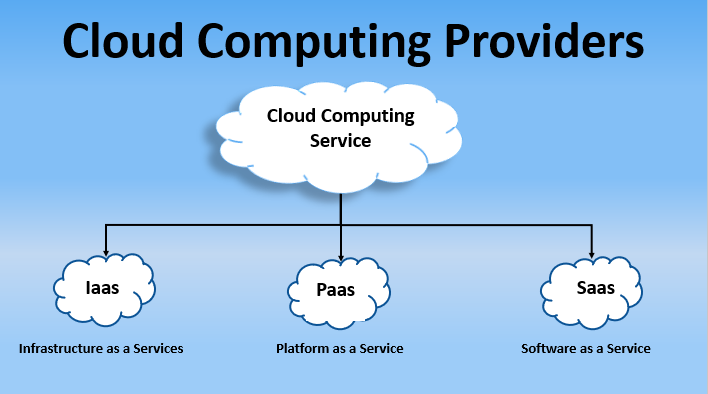Elevate Your Business with LinkDaddy Cloud Services: Letting Loose Universal Cloud Service Prospective
Wiki Article
Simplify Your Infrastructure With Cloud Solutions
As services browse the ever-evolving landscape of technology and information management, the role of cloud services in simplifying infrastructure has actually come to be increasingly famous. Just how can organizations properly browse this shift and absolutely unlock the capacity of cloud solutions for streamlining their facilities?Advantages of Cloud Services
Cloud services use a structured strategy to handling IT facilities, offering businesses with versatility, scalability, and cost-efficiency. One of the crucial advantages of cloud solutions is the scalability they offer. Services can conveniently scale their sources up or down based on demand, guaranteeing they just spend for what they make use of. This adaptability is especially beneficial for services with varying needs or those experiencing growth.Additionally, cloud services eliminate the demand for services to buy costly hardware and software program. This cost-efficiency is a considerable advantage, particularly for small to medium-sized business aiming to decrease ahead of time costs. By making use of cloud solutions, companies can access top notch IT resources without the substantial cost related to conventional infrastructure setups.
Furthermore, cloud services provide services with the adaptability to access their data and applications from anywhere with a web link. This degree of access improves cooperation among teams, makes it possible for remote job, and enhances overall performance. The adaptability offered by cloud services equips companies to adapt swiftly to changing market problems and consumer demands.
Expense Cost Savings and Scalability
In enhancement to the operational advantages highlighted previously, the assimilation of cloud services right into a company's framework produces substantial cost savings and enhanced scalability. Cloud services provide a pay-as-you-go model, allowing companies to scale sources up or down based upon current requirements, thus avoiding the costs connected with keeping excess capability. This adaptability makes it possible for companies to adapt promptly to fluctuating needs without sustaining unneeded expenses.Furthermore, cloud services get rid of the requirement for in advance financial investments in equipment and software program, lowering capital investment. Operating budget are likewise reduced as firms no much longer need to manage and keep physical web servers, leading to reduced energy intake and IT staffing prices. Furthermore, cloud services offer automated updates and upkeep, making sure that the facilities stays safe and secure and updated without needing hand-operated treatments.
Improved Safety Actions
Implementing stringent safety steps is extremely important when integrating cloud solutions into a business's framework to make certain and safeguard sensitive information conformity with sector policies. Cloud service carriers use boosted safety features such as information security, firewall software defense, and multi-factor verification to alleviate cybersecurity risks.Furthermore, routine safety audits and compliance evaluations assist make certain and recognize susceptabilities straight from the source adherence to market criteria. Business can also take advantage of functions like automatic safety and security updates and real-time hazard surveillance offered by cloud service providers. By prioritizing security procedures and staying proactive in resolving potential threats, services can confidently leverage cloud services while protecting their beneficial data from unapproved gain access to or violations.
Transitioning to Cloud Infrastructure
To efficiently incorporate cloud solutions into a firm's infrastructure, an organized approach that deals with the change towards cloud-based solutions is essential. Transitioning to cloud infrastructure involves careful preparation and implementation to guarantee a smooth movement procedure. The very first step is to assess the existing facilities and figure out which applications and systems are suitable for movement to the cloud. This analysis ought to think about elements such as data sensitivity, compliance demands, and efficiency demands.As soon as the assessment is full, a movement strategy must be created. This method should detail the timeline, sources, and duties for moving each element to the cloud. It is essential to interact this plan plainly to all stakeholders to make certain positioning and lessen disruptions throughout the change.
Throughout the movement screening, monitoring and process are vital to recognize and address any type of problems immediately. Routine checkpoints must be established to track progress and make required adjustments. Furthermore, training for staff members on utilizing cloud solutions ought to be provided to ensure an effective change and make the most of the benefits of the new infrastructure.
Best Practices for Cloud Fostering
Effective fostering of cloud services hinges on the tactical alignment of service goals with technical capabilities and business readiness. To make sure a smooth shift to the cloud, companies need to begin by carrying out a comprehensive evaluation of their current infrastructure and determining which work are best matched for cloud migration. It is vital to entail crucial stakeholders from various departments in the decision-making process to gain buy-in and address any type of problems beforehand.Another best practice for cloud fostering why not try here is to focus on safety and security and conformity. Organizations must carefully evaluate the protection measures supplied by cloud company and guarantee that their information is shielded according to market requirements and regulatory demands. Applying robust information file encryption, accessibility controls, and regular safety and security audits can help mitigate dangers connected with cloud adoption.

Verdict

As organizations navigate the ever-evolving landscape of modern technology and information administration, the function of cloud solutions in simplifying infrastructure has come to be progressively prominent - cloud services press release. Exactly how can organizations effectively browse this change and genuinely unlock the possibility of cloud services for streamlining their facilities?
Cloud solutions provide a streamlined method to managing IT framework, providing companies with cost-efficiency, flexibility, and scalability. By using cloud solutions, companies can access top notch IT sources without the significant rate tag associated with conventional infrastructure configurations.
To make certain a smooth change to the cloud, companies should begin by carrying out a comprehensive assessment of their existing framework and identifying which work are best matched for cloud migration.
Report this wiki page